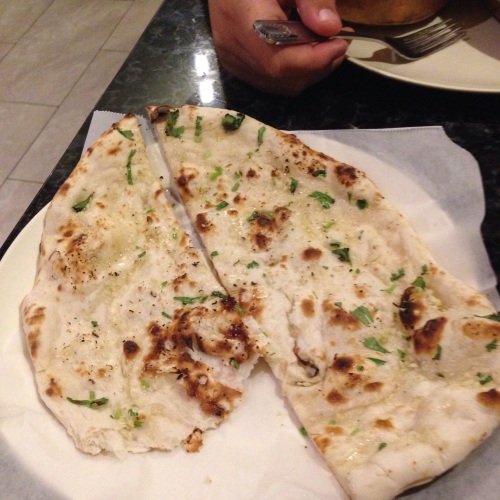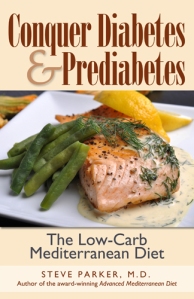
Chicken Kolhapur from Chennai Chettinaad Palace
From Madhur Jaffrey’s “An Invitation to Indian Cooking,” 1973 (43 years ago)
“Curry” is just a vague, inaccurate word which the world has picked up from the British, who, in turn, got it mistakenly from us.
“Us” being Indians.
If “curry” is an oversimplified name for an ancient cuisine, then “curry powder” attempts to oversimplify (and destroy) the cuisine itself.”
“Try to buy only whole spices and grind them yourself in small quantities.”
- in coffee grinder
- better flavor
- whole spice that the grindings came from lasts longer
- store in jar with tight lid away from light
“It is the preparation and combination of whole or freshly ground spices which makes Indian foods unique.”
Ghee: two types. See p. 9
Her recipes are adapted for American kitchens and stores. They focus on Delhi and adjacent sections of Uttar Pradesh.
Meat is usually goat. Fairly tough, so it is cooked slowly or tenderized.
80% of India is Hindu, who technically do not eat beef.
Cooking chicken? Usually remove skin first.
A tandoor is a clay oven with a live coal or wood fire.
Tandoori chicken is indeed popular in India.
“Indians never use olive oil,” but she does.
Fruits and veggies in India (1973) were/are very seasonal. Not eaten out of season.
Coriander (Chinese parsley or cilantro) and green chilies are essential.
Many Indians don’t like or eat hot (spicy) foods.
Most Indians eat a lot of greens: spinach, mustard greens, fenugreek greens, white radish greens, gram (or chick pea) greens. Spinach is popular over all of India.
Potatoes are a staple in North India.
The average Indian (1973) eats 1/2 to 2/3 pound of rice/day [cooked weight, I guess]. Her recipes use Carolilna (a long-grain uncooked rice) or basmati. (I must re-read. Is Carolilna really Carolina?)
Dals = lentils or pulses = varieties of dried beans and peas.
- daily in most Indian homes
- always eaten with rice or bread
Various home-made pickles are popular. By no means only made with cucumbers. Even meat can be pickled.
Chutney p. 226-7.
Her childhood family had servants.
Indian breads are called roti.
- chapati, paratha, porris, naan
- naan is leavened
- typically whole wheat flour
- cooked on a cast iron griddle or clay oven (tandoor)
In India most meals end with fruit.
From “Beyond Curry Indian Cookbook” by Denise D’Silva Sankhé, 2016. Subtitle: A culinary journey through India.
She’s a columnist at Serious Eats (Beyond Curry).
Over 50 languages in India.
“Curry, to most Indians, is only one type of dish, a gravy or sauce-based one, which can have meat or vegetable in it. “In India, there is no one “curry powder.”
Again, many regional differences in flavors and foods.
Grind your own spices. Store them dark and dry, in steel or glass airtight, in fridge maybe.
A masala is just a blend of spices; quite variable.
Nutmeg is poisonous, but use it anyway.
Dal designates more than lentils. Dals are a staple, served at least a few times/week. Dal-chawal is a simple dish of lentils and rice, and perhaps the most comforting of foods to Indians.
“Indian food is traditionally eaten by hand.” The right hand. The left is unclean.
“Mise en place” p. 35.
Some religions forbid alliums (e.g., onions and garlic) and root veggies. Substitute asefetida for the alliums.
Desserts and sweet treat are common, especially in religious and other festivals and celebrations.
Shop for pantry essentials and spices at specialty stores: Indian, Asian, Middle Eastern.
Buy spice in small quantities. They don’t store well for long.
Green chilis (sic): lighter-colored, longer ones are less spicy. Shorter, dark green ones are very hot. Thai and serrano chiles (sic) are fine substitutes.
When her recipes call for onion, she means red onion (can substitute white ones).
Testimonials
Search DietDoctor and you will find. Also http://indialchf.com
From Today’s Dietitian magazine:
August 2014 Issue
Indian Cuisine — Foods That Hold a Special Place in Plant-Based Food Traditions
By Sharon Palmer, RDN
Today’s Dietitian
Vol. 16 No. 8 P. 17
[Ed.: copy/pasted with a few paragraphs deleted. Click the link above for some recipes.]
Gita Patel, MS, RDN, CDE, LD, CLT, author of Blending Science With Spices, explains that Indian culture leans toward vegetarianism due to Hinduism, which hosts a central theme of nonviolence, including animals. “A profound respect for all life is a common Hindu belief that supports vegetarian eating styles,” adds Vandana Sheth, RDN, CDE, a spokesperson for the Academy of Nutrition and Dietetics.
However, British colonial influences and Western food trends, such as the emergence of fast-food restaurants, have brought more animal foods into India, Patel says. “With the globalization of the world and technology, some of the urban lifestyle changes have significantly affected traditional food practices in India,” Sheth adds, listing as evidence the increasing number of fast-food restaurants and premade foods replacing traditional meals in India.
Traditional Eating Patterns
“A lot of people are drawn to Indian cuisine. People like the flavors, herbs, and spices,” Patel says, noting that home cooking is vastly different from what you’re likely to sample in an Indian restaurant.
“The traditional eating pattern is very balanced,” Patel says. She describes typical meals consisting of dal (a legume dish), rice, roti (bread), vegetable, salad, fruit, and a yogurt or buttermilk drink, which may vary slightly depending on the region.
Indeed, there’s scientific consensus that a disease-protective diet is based on a variety of whole plant foods, which sums up the traditional Indian eating pattern. “The traditional Indian vegetarian diet is one that’s rich in a wide variety of grains, beans, lentils, vegetables, fruits, nuts, seeds, spices, and herbs. Research has found that vegetarians have a lower risk of heart disease and some types of cancer,” Sheth says. The National Cancer Institute reports that cancer rates are lower in India than in Western countries, and that diet characteristics such as a high intake of fruits, vegetables, spices, and tea may be responsible for protecting Indians against certain forms of cancer.2
Key Components
While the specific dishes may vary according to different regions of India, the key ingredients basically are the same and include the following:
• Vegetables: “Vegetables are grown all over the country due to the climate,” Patel says, adding that many vegetables are unique to India, such as specific types of gourds, radishes, beans, and greens. However, other dishes are based on more familiar vegetables, such as beets, Brussels sprouts, cabbage, carrots, cauliflower, celery, cucumber, corn, eggplant, green beans, various greens, okra, onions, peas, peppers, potatoes, radishes, spinach, squash, and tomatoes. In addition, fermented foods such as pickled vegetables are a regular feature in Indian cuisine.
• Grains: Rice and wheat are staples in India and used in flatbreads (eg, dosa, roti, chapati), doughs (eg, samosa, kachori), and side dishes (rice) to accompany meals.
• Legumes: Indian cuisine relies on the regular and flavorful use of legumes, such as black-eyed peas, chickpeas, lentils, and beans. In addition to dal, many legumes are sprouted or used as flour in breads.
• Fruits: Apples, apricots, bananas, figs, grapes, guavas, lychees, loquats, mangoes, oranges, papayas, passion fruit, and sweet limes are common fruits in India.
• Dairy: From milk and buttermilk to yogurt and paneer (fresh cheese), dairy products are regular features of the Indian diet. Patel reports that most Indian households receive fresh milk, which is then used for beverages and cooking. Households make their own ghee (clarified butter) from the milk fat, and leftover milk is made into fresh yogurt every day.
• Vegetable oils: Most oils used in traditional cooking are unrefined vegetable oils, such as peanut or sesame. However, Patel reports an increase in the use of refined oils, such as soybean oil, in modern cooking.
• Herbs and spices: At the heart of Indian food is a long list of culinary herbs and spices that have been used for centuries, many of which are proven to have antioxidant, anti-inflammatory, antimicrobial, and anticancer effects. Indian spices include amchur (made from mangoes), aniseed, asafetida (a pungent, onionlike flavor), bay leaf, black pepper, cardamom, chilies, cinnamon, cloves, coconut, coriander, cumin, dill, fennel, fenugreek, garam masala (a spice blend), garlic, ginger, mango powder, mint, mustard, nutmeg, onion seeds, parsley, pomegranate seeds, poppy seeds, saffron, sesame seeds, tamarind, and turmeric.
— Sharon Palmer, RDN, is a contributing editor to Today’s Dietitian and the author of The Plant-Powered Diet and Plant-Powered for Life.


















